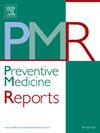Socioeconomic position and breast cancer screening use in Chile: A population-based study
IF 2.4
3区 医学
Q2 PUBLIC, ENVIRONMENTAL & OCCUPATIONAL HEALTH
引用次数: 0
Abstract
Background
Breast cancer screening is crucial for the early detection of the disease. Although several studies have examined the relationship between socioeconomic factors and mammography use, the impact of socioeconomic position (SEP) in countries undergoing demographic and epidemiological transitions—marked by a rising cancer incidence—and passive breast cancer screening programs in the search of the target population remains understudied.
Objective
To analyze the relationship between SEP in the use of breast cancer screening in Chile during 2022.
Methods
Data from the 2022 National Socioeconomic Characterization Survey was utilized for this study. The sample consisted of women aged 50–69 who were asked about their mammography screening history within the past three years. The relationship between SEP and breast cancer screening was analyzed using multilevel logit-binomial regression models.
Results
The study included 26,337 women, of whom 66.9 % reported having undergone mammography in the past three years. Three SEP indicators were associated with non-use of mammography. These factors were primary education level or lower (Prevalence ratio = 1.20; 95 % CI 1.08–1.33. Ref: tertiary level), belonging to the low-income quintiles (eg: Quintile I (Prevalence ratio = 1.49; 95 % CI 1.30–1.69) and II (Prevalence ratio = 1.41; 95 % CI 1.24–1.60). Ref: quintile V) and being unemployed (Prevalence ratio = 1.34; 95 % CI 1.18–1.51) or working in service and commerce (Prevalence ratio = 1.21; 95 % CI 1.06–1.39) (Ref: Managers and professionals).
Conclusions
Low SEP was significantly associated with the non-use of mammography. To improve mammography screening rates, it is essential to adopt strategies that incorporate both equity and territorial considerations.
求助全文
约1分钟内获得全文
求助全文
来源期刊

Preventive Medicine Reports
Medicine-Public Health, Environmental and Occupational Health
CiteScore
3.90
自引率
0.00%
发文量
353
 求助内容:
求助内容: 应助结果提醒方式:
应助结果提醒方式:


